On 3 February 1994, President Bill Clinton declared the lifting of the trade embargo against Vietnam, which was completely lifted in March 1995. The normal relationship between the United State and Vietnam was re-established. The United States-Vietnam relations in all aspects including economic cooperation, politics, diplomacy, culture, security, and defense have been incessantly widened so far. According to the official figures of the United States, the total trade value between the two countries in 2001 was 1.5 billion US dollars. According to the statistics of the General Department of Vietnam Custom, the number was 21.8 billion US dollars in 2012 and estimated to be 50 billion US dollars in 2020. No one, even the most optimistic people, could have imagined that the bilateral relations between the two countries were built and nurtured so deeply and widely like they were by their Governments and people.
Unfortunately, as acknowledged by the United States’ political circles, the only issue remains in the US - Vietnam relations is the consequences of the chemical warfare in Vietnam in the 1960 of the 20th century.
Since 1975, the Agent Orange issue has still remained in the agenda between two sides. United States tried to delay it. The United States often applies the Double standards in Agent Orange issue. US veterans exposed to Agent Orange during the military service in Vietnam War may immediately be entitled to variety of benefits for diseases compensation. On the contrary, Vietnamese people exposed to Agent Orange are not eligible.
In the issue of Agent Orange, the United States tries to refuse its legal and ethical responsibilities in the settlement of the consequences of Agent Orange disaster it caused despite of the fact that such responsibilities are obvious under international legal practices, international treaties as well as existing laws in the United States. Under the pressure of public opinion, since 2009, the United States started to take responsibility in cleaning the environment in Da Nang Airport. However, the United States intends to limit the cleaning of environment just in some hot spots among many dioxin hot spots. According to the “Report on United States - Vietnam relations in 2009 and the issue of Agent Orange” submitted to the United States’ Congress by the Congress Research Service (CRS), in June 2007, the United States’ Department of Defense gave the Ministry of National Defense of Vietnam the Map of Areas of Vietnam Sprayed with Herbicides in the period from 1962 to 1971”. According to the Report, besides some airports, there are many other hot spots. The United States deliberately tries to avoid providing health care and other supports for millions of Agent Orange victims in Vietnam.
The question raised is why the issue of Agent Orange has been pending for over 50 years?
The book “Remaining problem in US-Vietnam relation” written by Lawyer Le Due Tiet who spent years studying and following this issue will help you understand the reasons why the United States always try to delay the settlement of after-effects, which have existing for 50 years after the War. The book also puts forward the striving orientation to avoid turning the delayed justice into refused justice.
It’s my honor to present the book to domestic and overseas readers.
Vice President cum Secretary General of the Vietnam Lawyers’ Association
Prof. Le Minh Tam
Chapter One
GO INTO WAR
1. US replaced France in the war in Indochina
(The French defeated at the battle ofDien Bien Phu in 1954. The US spared no words to criticize the French. The US presidents including Eisenhower, Kennedy, Nixon and Johnson decided that Indochina cannot fall into the hand of the Communist. They determined not to let the US to repeat its failure in Chinese mainland where they let this territory’ slip to the hands of the Communist in 1949. The grass is always greener on the other side of the fence).
In World War II, the US earned 114 billion Dollars of profit. During the years 1945-1949, the US industrial output made up 56.4%, more than a half of the world’s output. US agricultural output was double of the total output of England, France, Federal Republic of Germany, Italia and Japan. The US gold stock accounted for 60% of the world’s gold stock. 50% of the boats sailing in the ocean belonged to the US. The US was the richest country in the world at that time. In terms of both economy and military, the US was a giant. After World War II, all countries, winners as well as losers, felt into the state of desolation with the economics so exhausted and could hardly be recovered, except for the US. The US was the most powerful country in the world.
The US politicians were ambitious. The US blatantly considered many areas in the world as their national strategic interests that the US government must protect.
The French defeated at the battle of Dien Bien Phu in 1954. The US spared no words to criticize the French. The US presidents including Eisenhower, Kennedy, Nixon and Johnson decided that Indochina cannot fall into the hand of the Communist. They determined not to let the US to repeat its failure in Chinese mainland where they let this territory slip to the hands of the Communist in 1949
From the US’s point of view, Ngo Dinh Diem was the most appropriate person to implement the US policies when they replaced the French in Indochina. Under the pressure from the US government and the active intervention of Cardinal Spellman, who was supported by the Vatican, as well as the pressure of the Vatican Popular Republican Movement {Phong trào Cộng hòa Bình dân thán Va-ti-can'), the French government and King Bao Dai were forced to delegate Ngo Dinh Diem to be Prime Minister on the Southern path of Vietnam by Decree 38/QT signed by King Bao Dai on June 16, 1954. Less than 15 months later, on October 23, 1955, Diem deceitfully organized a referendum to depose the Head of State position of Bao Dai, who had delegated him to be Prime Minister, to become the President of the Republic of Vietnam by a fraudulent election.
The US created a puppet and used weapons, money, war advisors and army to set up the Republic of Vietnam from the ashes of 100 years that the French Colonial left.
After becoming the Prime Minister and later the President, the first thing that Diem did was refusing to hold the national elections as stipulated in the Geneva Accord 1954 on suspending hostilities and restoring peace to unity Vietnam. Diem set out three policies “Anti-colonialism, anti-feudalism and Communism extermination” (Đả Thực, Bài Phong, Diệt Cộng). Anti-colonialism was focused on eliminating the intimate force of France to win the unique position of being the lackey for the US. Anti-feudalism was focused on deposing the Head of State position of Bao Dai. Communism extermination was focused on no other than revenging the resistance fighters. With weapon, money and US advisor, Diem and the US implemented the war that was called the ‘War on One Side’. The US and Diem used military and secret agent to repress, terrorize and kill people freely. People generally became the subjects to be hunted and slaughtered like a herd of sheep being attacked by wolves.
Diem implemented the policy of suppressing and eliminating the intimate force of France. Diem annihilated the military force of Cao Dai and Hoa Hao. General Trinh Minh The of Cao Dai was killed stealthily. General Ba Cut-Le Quang Vinh of Hoa Hao was fooled and then was executed. Cardinal Pham Cong Tac was pursued closely and had to escape to Phnom Penh.
American journalist Avro Manhattan wrote “....from 1955 io /960 - at least 24,000 were wounded, 80,000 people were executed or otherwise murdered, 275,000 had been detained, interrogated with or without physical torture, and about 500,000 were sent to concentration or detention camps “these are known as Dinh Điên Zone and Strategic Hamlet’’. The above figures were even higher if calculating to the date of the Ngo regime collapsed in 1963 ... He transformed the presidency into a virtual Catholic dictatorship, ruthlessly crushing his religious and political opponents” - ( From 1955 to 1960, at least 24,000 were wounded, 80,000 were excuted or otherwise murdered, 275,000 had been detained, interrogated with or without physical torture, and about 500,000 were sent to concentration or detention camps. (See: 'Avro Manhattan, Vietnam Why Did We Go? The Shocking Story ofthe Catholic "Church' Role in Starting the Vietnam War, Chino, Ca. 1984, p. 89).).
With the actions of anti-communism in a frenzy of violence, deposing King Bao Dai, and eliminating the military force of the religious sects, which were thought by the US to be influenced by France; Diem was respected and praised by the US to the skies. President Eisenhower called Diem the “miracle man of Asia.” President Lyndon Johnson called Diem “the greatest friend”. In the reply speech, Diem had the infamous statement that “With regard to security, thefrontiers of the US do not stop at the A tlantic and Pacific Coasts, but extend, in South East Asia, to the Ben Hai river, which partitions Viet-Nam at the 17th parallel, and forms the threatened border of the Free World, which we all cherish.”
Diem implemented crackdowns on Buddhists, causing several self - immolation of monks that shocked the public opinion in the country and the world. During 1956-1958, Diem occupied the unique position in the competition for the trust of the US. Diem had a faith that the regime of his family was as firm as a rock. Diem was proud that the US needed him more than he needed them. Autocracy, tyranny, mistrustfulness, and stubbornness were the nature of the Diem’s feudal side; had their opportunity to reveal and develop to a new stage. He ignored the advice of the US to divide and to limit the abuse of power of the secret service system established and leaded by Ngo Dinh Nhu, brother of Ngo Dinh Diem.
For most important positions in the government such as ministers, provincial governors, district chiefs and generals, key positions in the army, Diem used the Catholics. Those who refused to convert their religions, those who opposed the policies of religious discrimination, nepotism policies and the corruption of Diem’s family were unjustly accused of being minions of Communist, and arrested and tortured to death. At this time, the thing that the US politicians were most interested in was the number of Communists to be killed everyday. The more Vietnamese Communists were killed, the more optimistic the White House and the Pentagon felt. They thought that the victory of US army was close. Actually, the Pentagon and the White House knew that they were mutual self-deception. They did not dare to tell the truth to the American people. Reports from the battlefield in Vietnam sent to the US were called as the report on counting death bodies. Babies and elders were killed during the raids were counted as Viet Cong for achievement and reward. American and Diem gave instruction that all levels of army shall “ increase the pace of operations ... so that any combat unit shall go to battle about 20 day’s per month, simultaneously stopping defend duty in military posts - (After the inspection in Vietnam, coming back to US, McNamara and Maxwell Taylor sent a letter to ambassador Cabot Lodge on 5 October 1963 with the content: "increase the pace of operations in many military zones, especially in the West... so that any combat unit shall go to battle about 20 days per month, simultaneously stopping defending military posts.)”
Diem’s government implemented hectic policy of revenge on the former resistance fighter. Dennis Bloodworth commented “...By 1963 Diem’s secret police had picked up or pushed into the arms of his enemies nearly every prominent nationalist who had fought for the freedom of his country during the previous 20 years. He and his family suppressed all opposition, filled the jails, muzzled the presses, rigged the elections, and clung to all power.”
Human right of the Vietnamese people under the view of Diem and the US was what they did not worry. The cruelty was pushed extremely. Diem’s government had created an implacable resistant force against them from majority of the people. Diem’s government also created implacable resistance internally from Diem’s military and from politicians.
Thomas D. Boettcher wrote "... As a consequence of his increasingly repressive internal measures, popular discontent with Diem gradually intensified, despite his attempt to squelch it at every opportunity. The millions of peasants in the countryside became estranged from him. Not surprisingly, Communist activity intensified as discontent increased. And Diem s repressive measures increased accordingly...”
Both Diem and the US at this time almost lost consciousness. They deluded themselves by the illusions of victory brought by US money, weapons and the brutality of Diem.
2. The more cruelties they sow, the more woes they reap
(The land under the foot of the US was collapsed. Sowing the wind shall reap the storm. Both the US and Diem felt to the state of dilemma. American politicians had flattered Diem and they were the ones who eliminated and disposed Diem in the most brutal way).
The more Diem escalated to the highest level of crimes, the more level of the resistance of the people was increased. People were no longer confined but to struggle with violent measure. From 1956 to 1958, the people were killed but still struggled patiently by using peaceful measure. However, from the middle of 1959, the form of armed struggle was appeared in instead of the behavior of resignation due to be imprisoned and to be deprived of life as appearing previously. In some locations, people rebelled, seized weapons, used knife to kill malefactors, and dispersed the government in commune and giuld.
On January 17, 1960, people in three communes: Dinh Thuy, Phuoc Hiep, and Binh Khanh of Mo Cay district in Ben Tre province rose up in arms simultaneously. People in these three communes arrested officials, smashed the strategic hamlets, and destroyed the military posts of Republican army and liberated themselves.
On February 22,1960, the US and Diem used 12,000 troops, 15 warships and many aircrafts to attack the three communes. The people in here bravely fought within 12 days and nights. Due to encountering the fierce resistance from the people, until March 10, 1960, the US and Diem ordered the sweeps should be withdrew and discontinued. Within March 1960, people in Giong Trom District in Ben Tre Province imitated the people in Mo Cay district to rebel and seize the authorities. Dong Khoi Movement in Ben Tre province had eliminated over 100 military posts, seized 1.700 guns, and liberated more than 70 communes. More than a half of million people were out of the restraint from the US and Diem.
Untill September 1960, Dong Khoi Movement in Ben Tre spreaded throughout the Southern provinces, and then to Sector 5 and Tay Nguyen province. Most of the Southern Delta, Sector 5 and Tay Nguyen were under the control of revolutionary force. By the end of 1960, the rebel force had controlled 600 out of 1298 communes in the South Delta; 904 out of 3829 hamlets in the delta and coastal of the central provinces; 320 out of 5721 communes in Tay Nguyen. Diem’s troops withdrew and clustered inside the big cities. Diem’s regime was shaken to the root and was on the brink of collapse.
US Central Intelligence Agency sent a report to President Kennedy with the content: “A serious period for President Ngo Dinh Diem and Republic of Vietnam is on the front. Within only the last 6 months by the end of I960, the security situation in the country continued to worsen and is now up to serious levels. The entire countryside in the South and South West of Saigon, as well as the northern region are under the great control of the communists".
War on One Side that was in fact a mad killing course and a savage revenge lauched by the US from 1956 to the end of 1960 was defeated by Dong Khoi Movement of the people
In the previous time, the US considered Diem as a great friend; and now, Diem was hated. American journalist Denis Warner called Diem was ‘the last Confucian’. Stanley Kamow called Diem was ‘the American mandarin’. Dr. Ronald Frankum had written: “Diem could not become the leader ofanti-communist democracy as Americans predicted. He also did not execute the reform as hoped by the US and in various ways; he separated from the same leadership required by the members of Kennedy’s cabinet. He became the hated leader that the the government of Kennedy has to communicate - (In 1963, The Kennedy Administration began to see President Ngo Dinh Diem ofthe South Vienam as a tool of communist and decides that "Diem must go'l The CIA agents attempted that eventually lead to his assassination in November. In three weeks later, at 11h30' on 2 Noyember 1963, President Kennedy was assassinated in Dalas. This is the story 'The lord is dead and the king is also passed away (Chúa chết, vua cũng băng hà).
“Go into the war" were the usual word of many Americans at this time when mentioned about the US involvement in the Vietnam War. The word, at the beginning, meant urging and encouraging the US to control the war directly. However, when the US was in the tunnel with had no exit, it meant the inevitable consequences of the risk that the US had embarked on.
“The more cruelties they sow, the more woes they reap” and “Sowing the wind shall reap the storm” are the maxims handed down inside the society from many generations. The causes and the tragic consequences that Diem faced did not go beyond the inevitable law of causal relationship which was expressed through the maxims in Vietnam and in many countries around the world.



















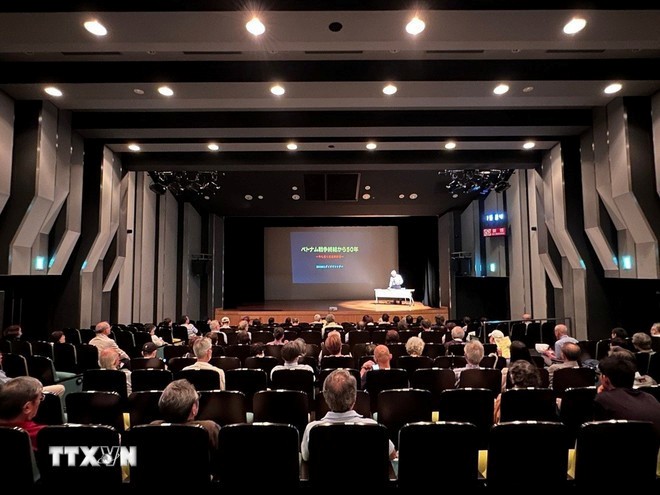
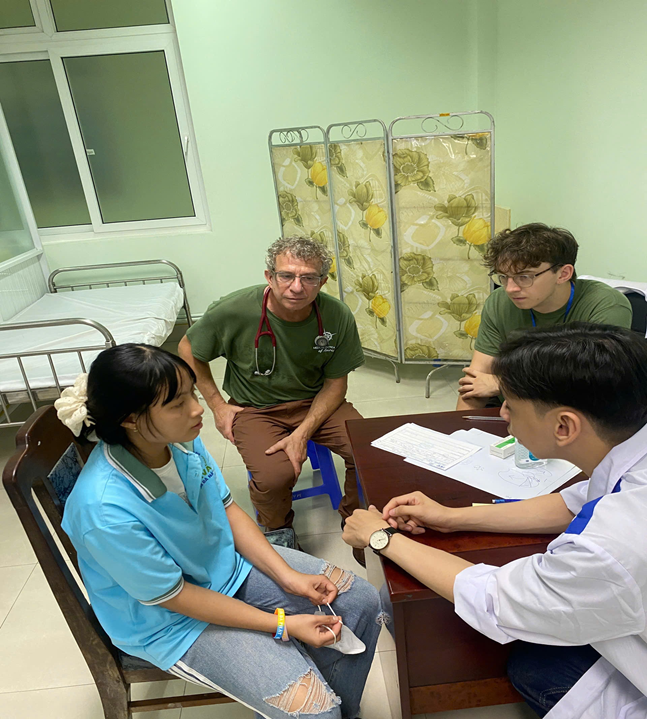
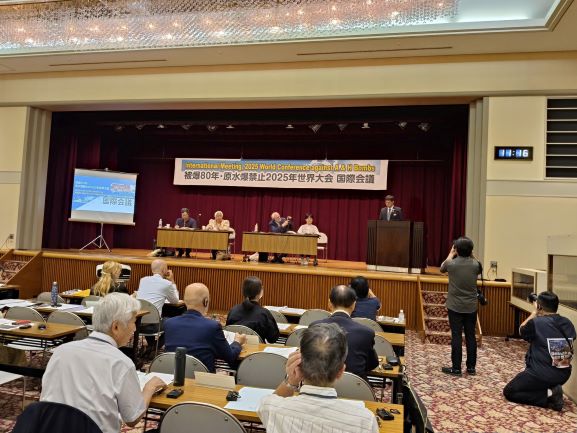
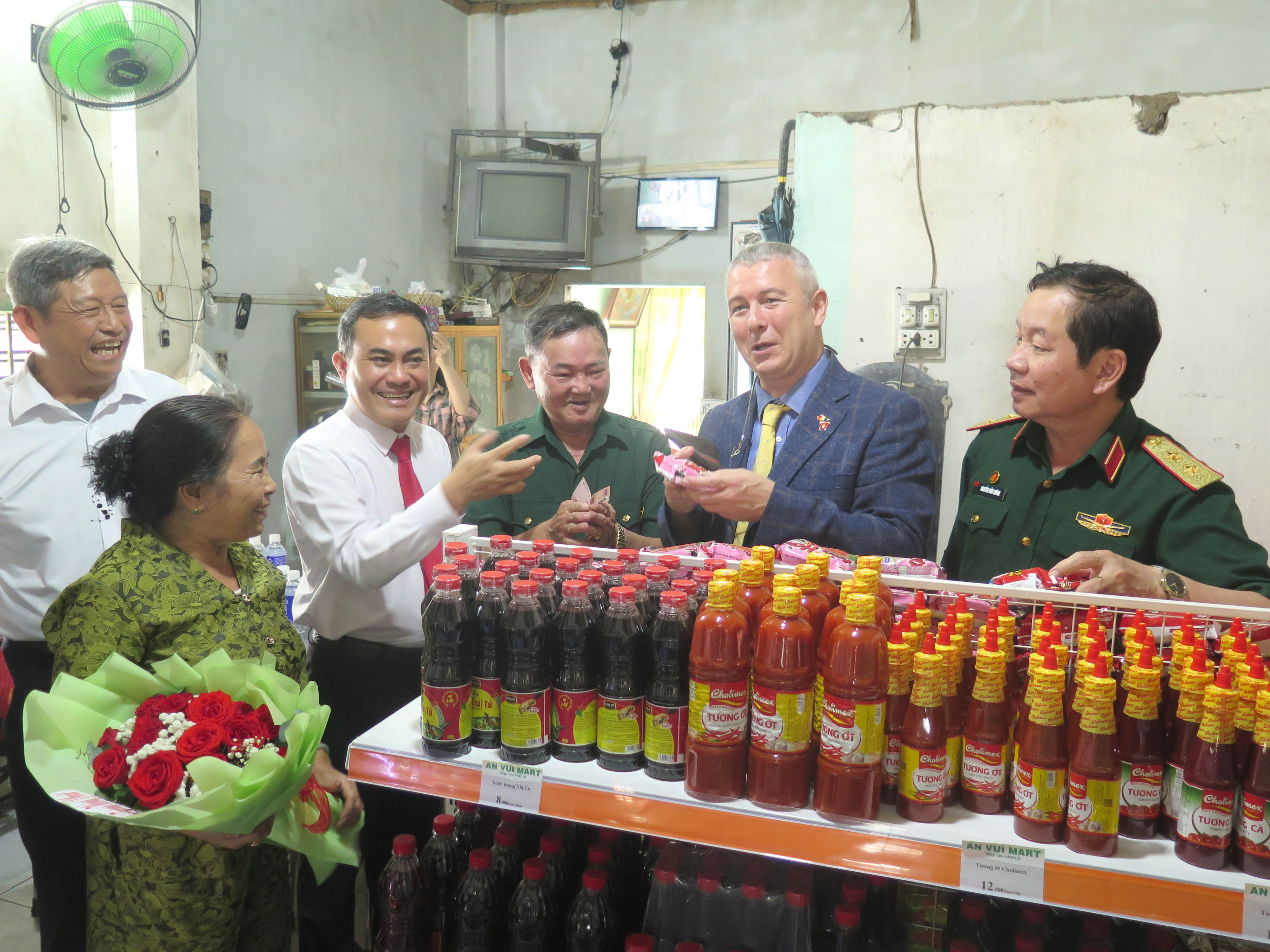
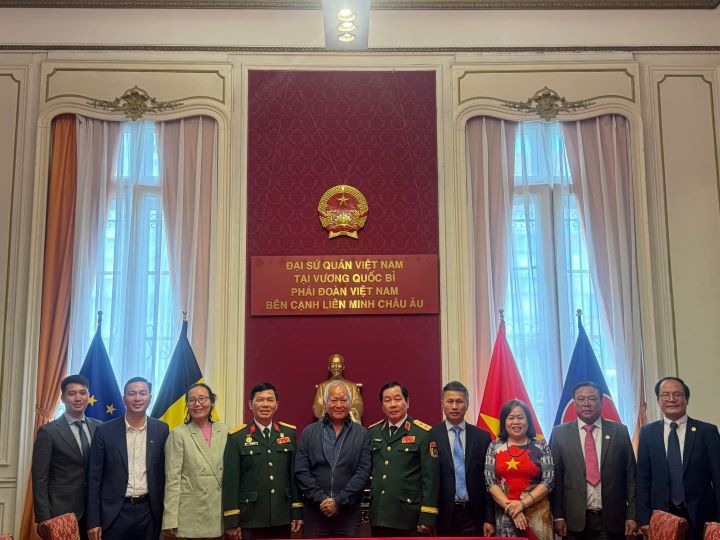






Comment